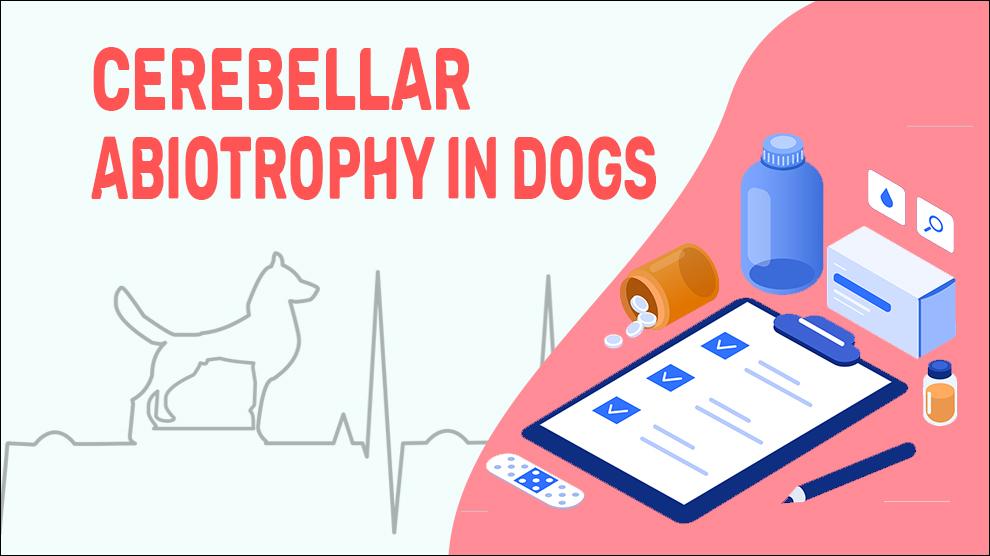What Is Cerebellar Abiotrophy In Dogs?
Abiotrophy in the nervous system refers to premature degeneration or loss of function of neurons, not due to any apparent injury and caused by some inherent aberration in their metabolism or structure. Cerebellar Abiotrophy in dogs is an autosomal, recessively inherited, neurodegenerative disease that causes the dog's cerebellar neurons to die off prematurely. This condition is also called cerebellar cortical abiotrophy.
Cerebellar abiotrophy represents a collection of postnatal syndromes that are progressive and incurable. This is in contrast to the cerebellar hypoplasias, which is non-progressive and denotes an insufficient development of the cerebellum as cerebellar germinal cells and neurons are destroyed in utero. This happens when pregnant dogs are vaccinated against or infected by specific infectious diseases.
Histologically, cerebellar abiotrophy usually involves thinned cerebellar folia and a primary loss of Purkinje neurons. Mostly, the condition is noticed within the first few months of life, but in some dogs, it may not be seen for a few years.
This is a progressive and degenerative disease that compromises the quality of life in affected dogs. Most often, dog owners decide to euthanize to end the agony of the affected dogs.
Symptoms Of Cerebellar Abiotrophy In Dogs
Neonatal Cerebellar Abiotrophy:
- Exists from birth
- Unable to get nursed
- Unable to walk/walks with goose-stepping/falling
- Muscle tremors
Postnatal Cerebellar Abiotrophy:
- Manifests some time after birth - may be weeks or even months
- Wide stance
- Stiff walking
- High stepping
- Falling
- Overreaching and overstepping
- Muscle tremors
- Knuckling feet
- Head shaking
- Incoordination
- Hyperactivity and aggression
- No menace reflex
Extrapyramidal Nuclear Abiotrophy:
Apart from the above symptoms
- Blindness
- Seizures
- Confusion
Treatment Options For Cerebellar Abiotrophy In Dogs
There is no specific cure for cerebellar abiotrophy but it can be treated to relieve symptoms.
- Pain medications such as carprofen (Novox or Rimadyl), firocoxib (Previcox), grapipant (Galliprant), deracoxib (Deramaxx), meloxicam (Metacam ) etc.
- Anxiety medications such as Alprazolam (Xanax), buspirone, and Clomipramine (Clomicalm).
- Protecting cells from damage - Coenzyme Q-10.
- Improvement of nerve impulse transmission - carnitine.
Home Remedies For Cerebellar Abiotrophy In Dogs
Proper treatment and careful home care can help dogs with abiotrophy maintain a quality of life for a reasonably long time.
How To Prevent Cerebellar Abiotrophy In Dogs?
Cerebellar abiotrophy has been linked to an inherited autosomal recessive gene. Therefore, the best method of prevention is responsible breeding practices.
Breeders should keep track of lineages with a lower-grade form of this disease and stop breeding the dogs.
Affected Dog Breeds Of Cerebellar Abiotrophy
Neonatal Cerebellar Abiotrophy:
Beagle, Samoyed.
Postnatal Cerebellar Abiotrophy:
Australian Kelpie, American Staffordshire Terrier, Airedale Terrier, Bernese Mountain Dog, Bern Running Dog, Border Collie, Brittany Spaniel, Bullmastiff, Bull Terrier, English Springer Spaniel, English Pointer, German Shepherd, German Boxer, Gordon Setter, Labrador Retriever, Lagotto Romagnolo, Old English Sheepdog.
Cerebellar and Extrapyramidal Nuclear Abiotrophy:
Kerry Blue Terrier, Rough Coated Collie, Miniature Poodle, Young Dogs.
Causes, Types, And Diagnosis For Cerebellar Abiotrophy In Dogs
- Causes:
The etiology of cerebellar abiotrophy is not known, but it is assumed to be congenital in certain breeds.
- Types:
Neonatal Cerebellar Abiotrophy - is very rare in dogs. Purkinje neurons are destroyed before birth due to intrinsic reasons, causing the symptoms to be evident from birth.
Postnatal Cerebellar Abiotrophy - most common in dogs. The Purkinje neurons are normal at birth but begin to deteriorate spontaneously within a few weeks to months.
Cerebellar and Extrapyramidal Nuclear Abiotrophy - besides the Purkinje cells, other brain cells also get affected.
- Mortality:
Young dogs have the highest mortality rate as they are unable to get nursed. Although there is no cure, cerebellar abiotrophy is usually not fatal but the quality of life is highly affected.
- Diagnosis:
- Complete Physical Exam
- Dog’s Reflexes
- Biochemical analysis, Complete blood count
- Bacterial and fungal cultures
- Cerebral spinal fluid analysis
- MRI
- Prognosis:
There is no cure for cerebellar abiotrophy. This is a chronic, progressive neurodegenerative disease that will typically continue to worsen over time, with progressively more severe symptoms. However, the rate of progression can vary considerably from one dog to another. Treatment is usually supplemental and is based on the dog's symptoms.
When To See A Vet For Cerebellar Abiotrophy In Dogs?
Contact your vet right away, if you notice any of the following:
- Puppies that are Unable to walk/walk with goose-stepping/falling.
- Muscle tremors
- Stiff walking
- Falling
- Overreaching and overstepping
Food Suggestions For Cerebellar Abiotrophy In Dogs
- Leafy greens (Spinach, Kale, Lettuce).
- High-quality protein (Seafood, Meat, Dairy, or eggs).
- Essential fatty acids (Egg yolks, Oatmeal).
- Broth or stock of boiled chicken bones.
- Tuna, Salmon, Cod, Whiting, Whitefish, Trout, Mackerel, Sardines, and Herring.
- Button Mushrooms, Oysters.
- Cooked or raw liver, Red Meat.
- Plant-based proteins Peas, Chickpeas, and Lentils.
- Canned pumpkin, Carrots.
- Berries, Apples, Banana.
Conclusion
Cerebellar abiotrophy restricts your dog from living its life to the fullest. Whatever the form of abiotrophy is, it always progresses and becomes increasingly worse - this means, that the longer the dog has the condition, the dog gets progressively weaker. Dogs may require physical therapy depending on the severity of the disease. Physical therapy is done to enhance muscle strength.

















